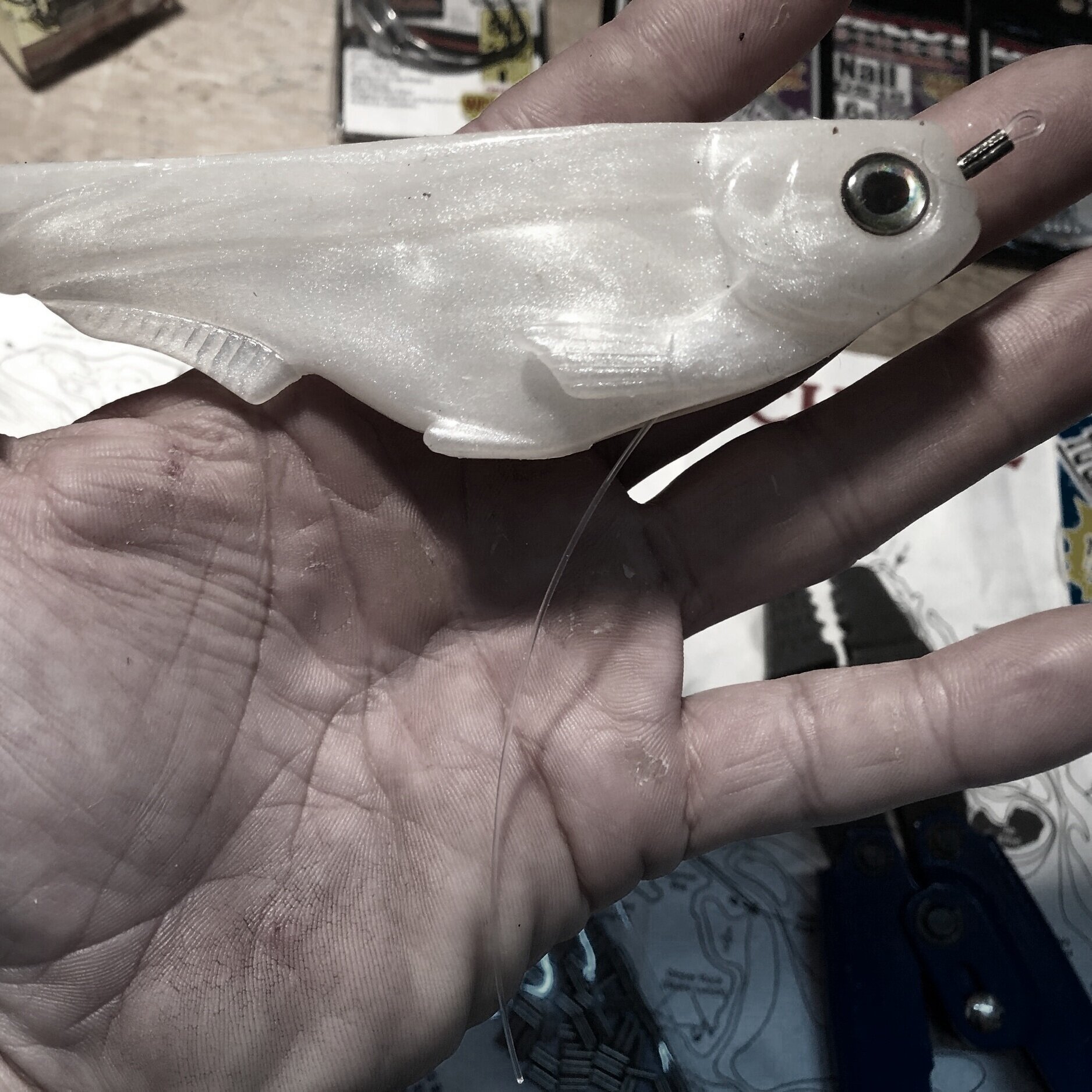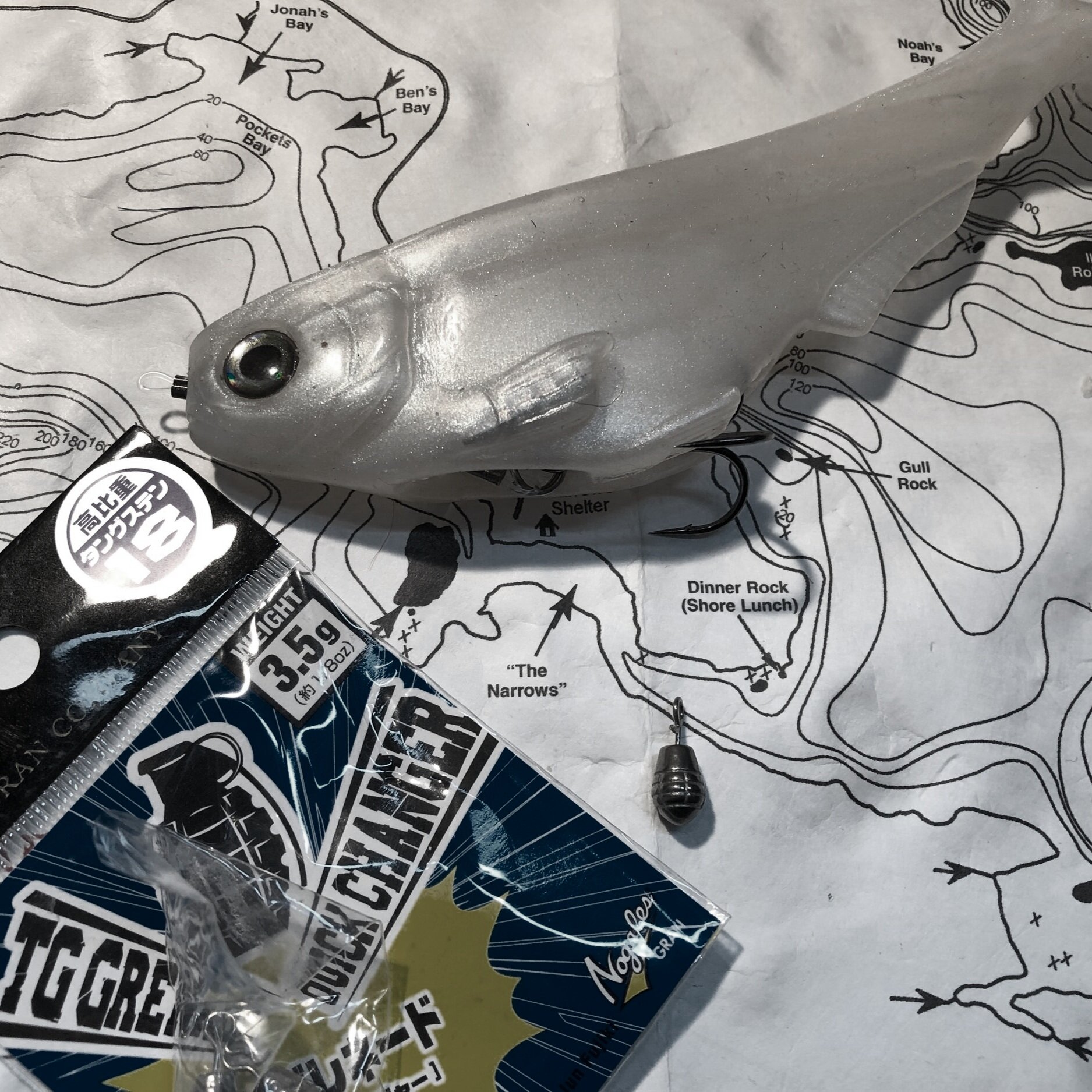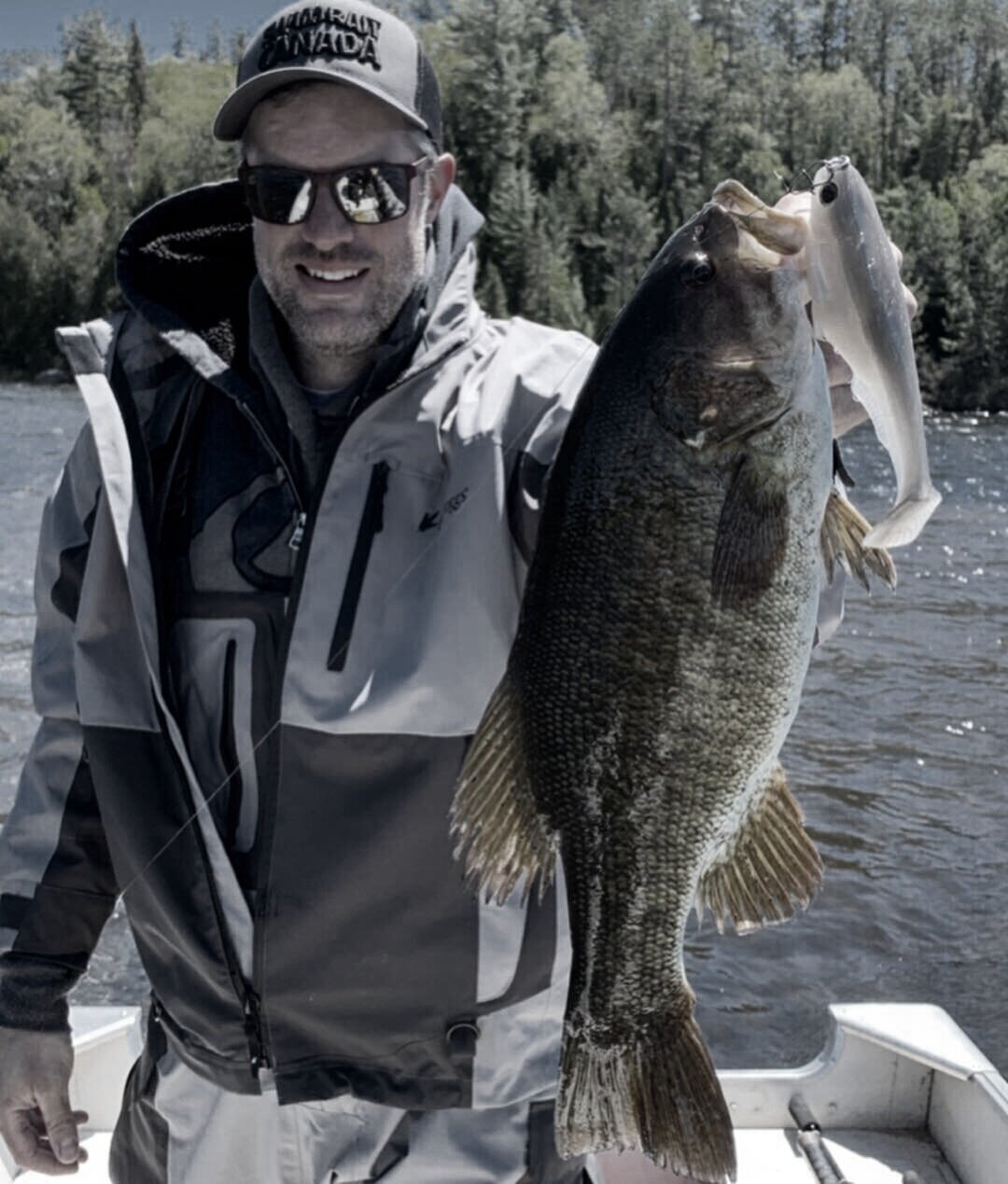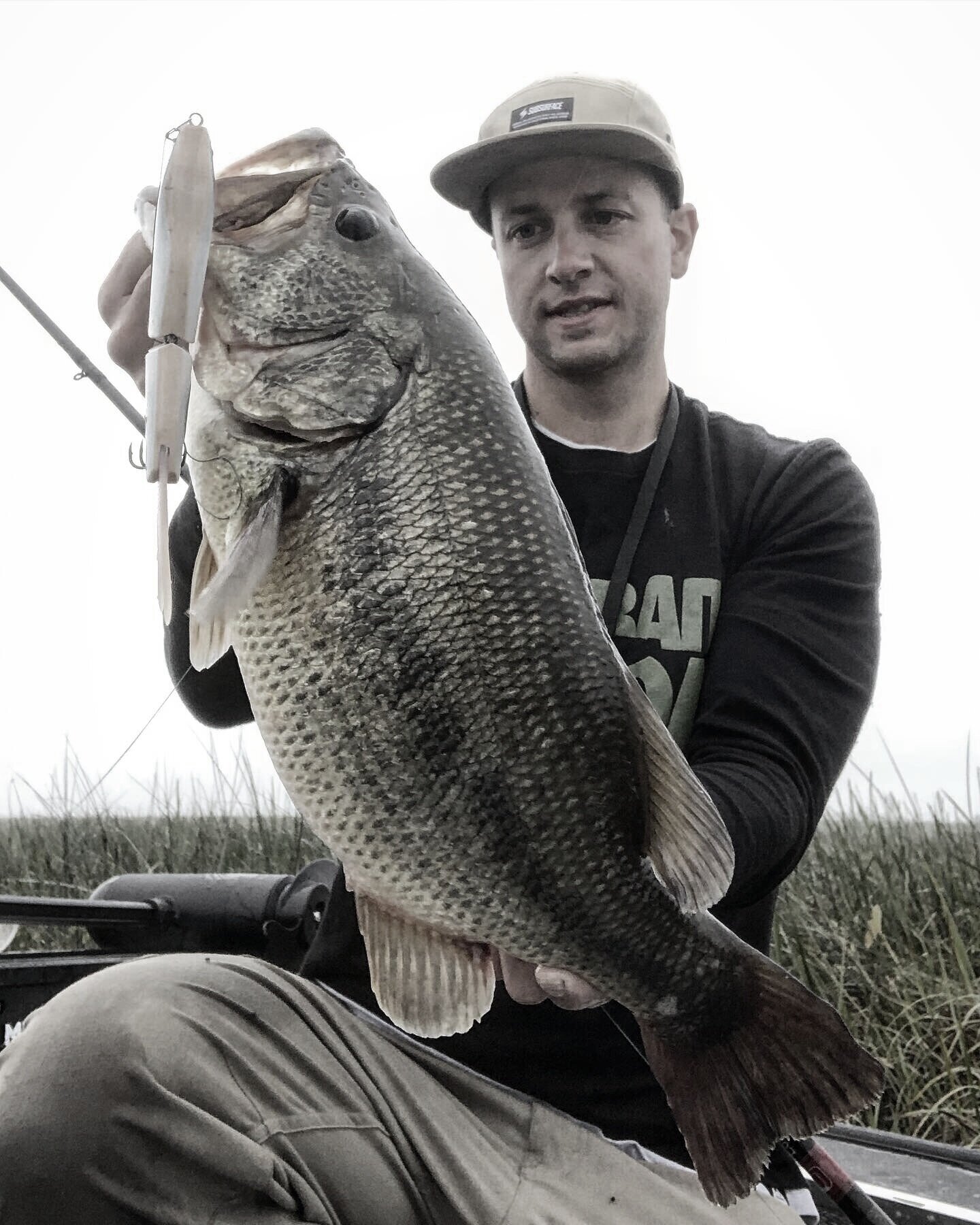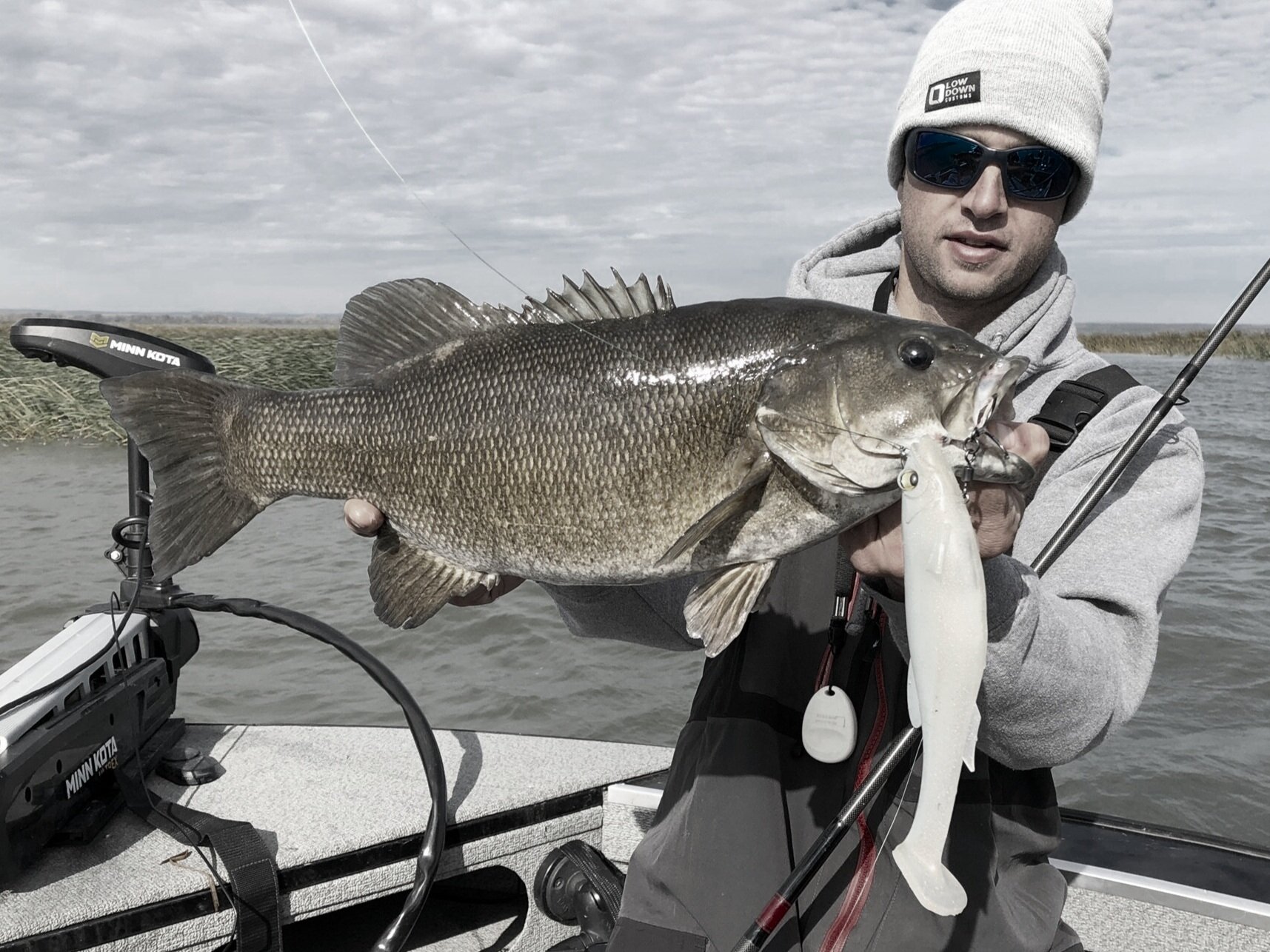Last spring, me (JS) and the rest of the SC crew made our annual trip to the Beauchene Wilderness lodge. It’s a lodge in northern Quebec, Canada and the lakes are fully loaded loaded with Smallmouth Bass.
For the trip, my partner Pat received a bunch of Working Class Zero Citizen 6’s to test.
At this time of the year, the smallies were hanging on the ledges in about 7-8 feet and were coming up from the bottom to attack the bait head first. When we figured it out, I decided to rig the citizens with the material I had at the moment. The idea was to expose the hooks on the belly for a better hookup ratio and to experiment with different sink rates. We had a cold front for a few days which caused the topwater and hard bait bite to be slow. The citizen rigged that way helped us to fish slower and deeper and ultimately put us on some really good fish.
STEP 1
With a long and sharp tool, like a nail. Drill a hole from the middle of the nose to the middle of the belly of your Citizen.
DRILL A HOLE
STEP 2
Cut about 6 inches of fluorocarbon. A bit longer than what you really need so you can find the proper length. We used 60lbs fluoro which worked fine. I wouldn’t recommend a smaller size. The Bigger the line diameter, the harder it is to tear the Citizen during a fight.
CHOOSE YOUR FLUORO WISELY
6INCH IS ALL YOU NEED
STEP 3
Use a double barrel sleeve to make a loop with your fluorocarbon. Make sure to use the proper sleeve diameter that matches your line size. We used 1 mm diameter sleeve with 60 and 70 pound fluoro. You could insert a split ring on the loop if you like a bit more play between the bait and the line.
CHOOSE THE GOOD DOUBLE BARREL
DO THE LOOP
STEP 4
Tighten the loop and crimp it with crimping pliers.
CRIMP IT
STEP 5
Insert your fluoro with the loop into your Citizen.
INSERT YOUR FLUORO
STEP 6
Insert a sleeve onto the other end of the fluorocarbon.
INSERT THE SECOND SLEEVE
STEP 7
Insert the fluorocarbon into a split ring/ treble hook and close the loop in the sleeve. For the Citizen 6, we used Owner size 1 ST36-BC hooks and size 6 hyper wire split rings.
CHOOSE YOUR HOOKS
CLOSE THE LOOP
STEP 8
Tighten the second loop. Make sure the hook sits tight in the slot on the end. Before tightening the sleeve, make sure the fluorocarbon and sleeve are properly in the bait. You should only see the loop on the nose of the bait.
TIGHTEN IT
STEP 9
Once you’re satisfied with the hook and fluoro placement, crimp it the second sleeve and cut off the excess tag.
CRIMP AND CUT
STEP 10
Now you’ll need to add some weight to the bait. At the Beauchene Lodge, we used TG grenade weights (3.5g) for the Citizen 6. They make it easy to clip onto the belly split ring. It was in cold water and on a lake, The weight will vary depending on the situation (changes in water temp and current). The baits sink more in colder water. You could also use nail weights. The Decoy 1.2G are the perfect size to fit in the side fins of the Citizen 6. Depending on the time of year, you will need to add or subtract weight for the fish you are targeting. This rig keeps it simple to adjust the bait the way you want. The Grenade and nails weights make it easy to make these changes on the fly.
1.2G NAILS
NAIL THE FINS
CHOOSE THE RIGHT GRENADE
GET READY TO BE BATTLE SCARED
RIGGING VIDEO
HOPEFULLY THIS ARTICLE WILL HELP YOU TO REACH CONFIDENCE AND SUCCESS WITH SOFT SWIMBAITS. THAT TECHNIC COULD BE APPLY ON MOST SOFT PLASTIC SWIMBAITS. fURTHERMORE THE DESIGN OF THE wORKING cLASS zERO cITIZEN AND bATTLESHAD ARE AWESOME FOR THE HOOK POSITIONING.
CHECK OUT WORKING CLASS ZERO STORE FOR AVAILABILITY. MIKE GILBERT AND HIS FAMILY HAND POURED ALL BAITS. LOTS OF LOVE AND PASSION INVESTED IN THOSE BAITS. THEY DESERVE ALL OUR SUPPORT.
LINK TO WCZ WEBSITE http://www.workingclasszero.net/
WORKING CLASS ZERO INSTAGRAM https://www.instagram.com/working.class.zero/
JS FORCIER








